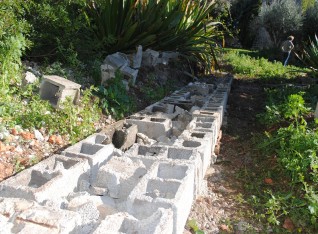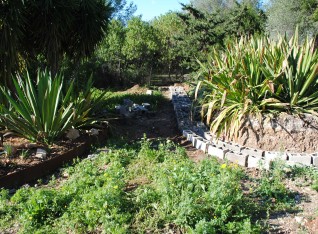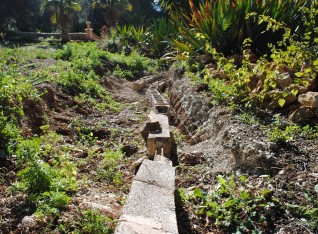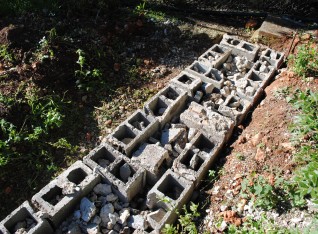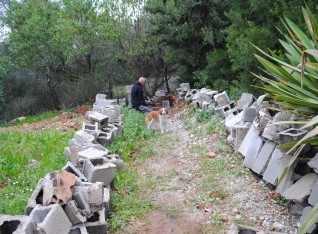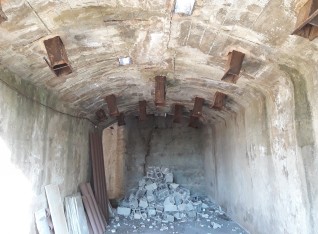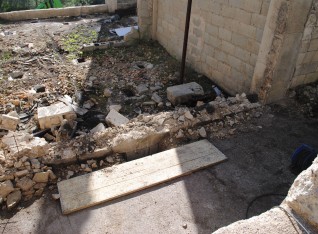Foundation for a dry stone wall
January 12, 2018One of the long term projects still under construction is the landscaping of the garden before the cottage, on the south side, between the cottage and the orange garden. It started last year, but we stopped when the weather conditions became too hot to work. Also the soil is rock solid hard when dry, which makes it very difficult to even dig into it with an excavator. So it stopped, but it's an exiting project and the rough design of how it's going to be is already partly visible, which inspires to continue.
The past week weeks I have been partly busy in the old storage building of the coal. I really wanted to plant a seed of progress there, as it would be so wonderful to be able to use it practically. Especially now we are offering a new type of host on Hovos, the 'experience' host, someone who offers a course or a workshop. The very first experience host who has signed up is a professional German photographer, Arne von Brill. He is offering his photo classes here on La Mina San Cayetano where his students will stay in one of our guest houses (link to his profile: www.hovos.com/h4069). It would be great if Arne could use the spacious rooms in the building for evaluating the photos taken on a large screen using a projector. Besides this the building could be used for anything, parties, meetings, cinema, wine tasting... . Since there has been quite some standstill over the past years I thought it was time to inspire myself by just moving forward one small step.
It's always efficient to work on multiple projects at the same time sharing work which has to be done anyway. So I came up with the idea to remove one of the inside walls of the coal storage building and use the hollow concrete blocks for the foundation of a dry stone wall in the cottage garden. And so I did. To access this inside wall I first had to drill out a solid concrete wall of 40 cm thick, which was not an easy job. I nibbled bit by bit pieces of the concrete off, which took me a few days even with a powerful breakhammer of Makita (4 hours a day). When done I had access to the inside of the building just from behind the old steel mine tower. Removing the hollow blocks without breaking required a more delicate technique and although some blocks broke to pieces most of the blocks came out unharmed. With the minidumper I transported it to the cottage garden.
The base or foundation of the dry stone wall is created of these blocks (50 x 20 x 20 cm) with a width of 70 cm. Lots of the nibbled off pieces are used as filler, so we don't have to make too much concrete. It's not an overhanging balcony we are constructing, it just needs to be a solid base to build the wall on of natural stone.
This weekend we will fill the foundation with concrete and next week we will build the wall on the inside with the same type of hollow blocks (new). This inside wall must be a bit stronger as soil will be leaning on it, so this we will fill with pure concrete and some steel bars inside. The actual dry stone wall will be build on the outside of this wall. We are not doing this final part ourselves, we will hire professionals for this who are 10 times faster and the end result is 10 times more beautiful.
To be continued...
